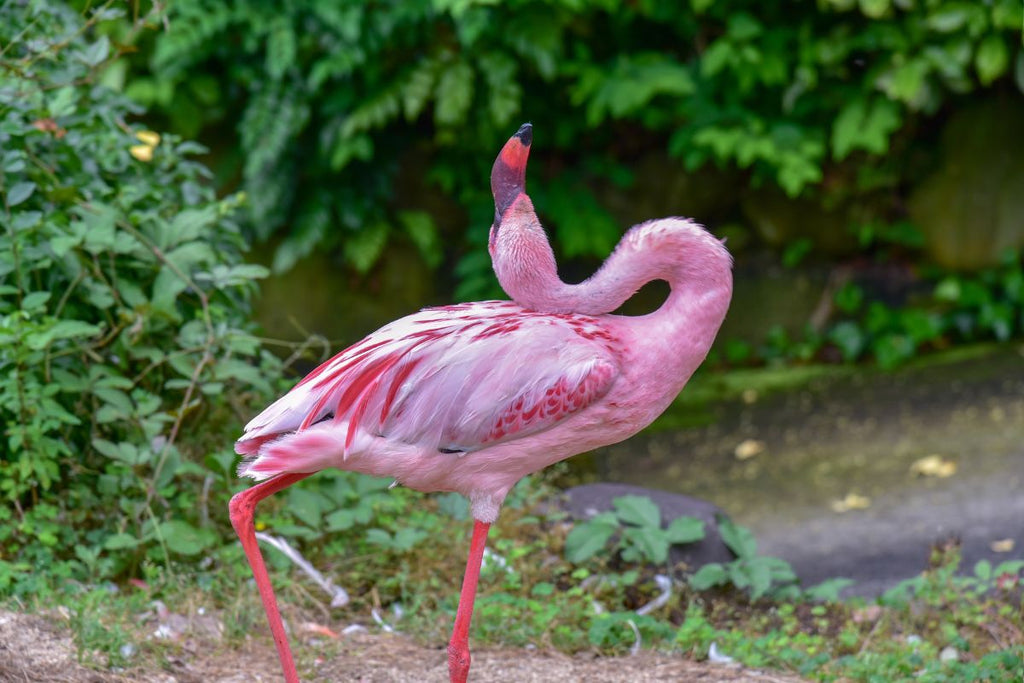Why Birds Stand On One Leg

Photo by Tokunaga226/Shutterstock.com
Close your eyes and imagine a flamingo. What are you visualizing? If it wasn’t the beautiful bird, with one leg planted and the other hoisted, then you’re wrong.
Just kidding. You aren’t wrong if you pictured a flamingo in some other stance. But odds are, the one-legged pose the bird is known for is what entered your mind.
The peculiarity of their preferred perch is famous. It is one of the most indeling images people have of flamingos. It might be part of why you love them so much. It is admittedly charming, after all, to see such a creature balance itself with tranquility on a single pillar, defying our propensity towards strength in numbers.
Flamingos are not the only birds to engage in such singular behavior. As bizarre as it seems to our mammal minds, it’s not that outlandish in the avian world. Birds that stand on one leg don’t all live in the same climates or see the same situations from day to day, but their motivations behind doing so share similarities.
Why Do Some Birds Stand On One Leg?
If you are reading this blog, you probably know a thing or two about flamingos already, including why they like one leg over two, but you may not know about the cousins of flamingos that flaunt the same style.
These birds don’t all stand on one leg for the same reasons. For some, it’s a way to become more versatile if escaping a predator’s threat becomes necessary. Others may engage in the adaptation to halve their visual footprint when stalking prey. Conserving warmth, adhering to antomic builds, and, in the case of hawks, just showing off count among the reasons why this behavior exists.

Photo of a gull standing on one leg
For birds like gulls that have to worry about other, larger birds swooping down from the heavens upon them, standing on one leg allows for increased quickness in dodging such attacks. For geese, who spend a lot of time around shrubs, mud, and other similar foliage, standing on one leg gives them greater camouflage to blend in and avoid the gaze of coyotes, badgers, raccoons, and the odd bear.

Photo of a goose standing on one leg
Most birds don’t have this problem, though – flying is the ultimate anti-predator defense. For birds like storks, ibises, and egrets, having only one leg wading in the water helps them remain undetected to unsuspecting reptiles, amphibians, and small mammals that the birds have designs for.

Photo of a stork standing on one leg
For sandpipers and herons, their anatomies push them onto one leg. Both birds have counter-circulatory systems, which means that, while moving on one leg, the veins from their tucked foot cool the arteries on their underside. This is effectively similar to what sweating does for our skin, or panting for a dog.
Along those same lines, but directed oppositely, birds will pull one leg close to their body to conserve warmth. If you see a bird doing this at rest during the colder months, that is probably why. This is a motivator for stocks, ducks, swans, and gulls as well as flamingos. Pulling their leg up limits the animal’s surface area exposed to the elements and brings the foot and leg into contact with warm feathers. The latter is especially helpful when in or emerging from a cold water source.
And then you have hawks and eagles, who like to stunt on the rest of us by showing off unnatural and unnecessary poses simply because they can. They are vicious, bloodthirsty predators with extraordinarily keen senses that dive bomb onto those below them. They know where they stand in the natural pecking order and have no qualms with lettin’ ‘em know.




























